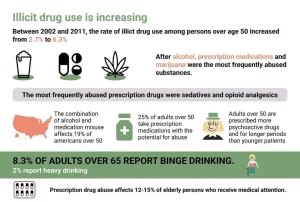
DBT, with its emphasis on mindfulness, emotion regulation, and interpersonal skills, offers a comprehensive approach for those struggling with intense emotions and relationship difficulties. Its balance of acceptance and change can be transformative for individuals who have found other treatments ineffective. CBT focuses on identifying and challenging negative thoughts, problem-solving, and gradual exposure to feared situations.
Rational Emotive Behavior Therapy vs CBT: Key Differences and Similarities

Contact us today for more information on how to begin your mental health dialectical behavioral therapy recovery journey. „The journey of therapy is like planting a seed. You have to nurture it, give it time to grow, and trust in the potential for change.“ It may be tempting to seek immediate results, but true growth and healing require patience. Just as physical recovery takes time, so does emotional and mental well-being.
DBT: The Emotional Balancing Act
- Medications such as fluoxetine can be prescribed to help manage symptoms, but recognizing the root causes of CPTSD remains critical for effective recovery.
- Understanding the impact of trauma and finding the right support can lead to meaningful change.
- DBT incorporates acceptance, mindfulness, and emotional regulation techniques, focusing on acceptance of oneself and validating one’s experiences as a means of promoting growth and change.
- For more comprehensive understanding and coping mechanisms, exploring trauma and PTSD therapy could be beneficial.
This model emphasizes the importance of validating and accepting your feelings. The main goal of DBT is to teach you skills that can be used to better manage intense emotions and Twelve-step program improve communication. CBT, with its broader focus and adaptability, has shown effectiveness across a wide range of conditions, including depression, anxiety disorders, and PTSD. Its structured approach and emphasis on measurable outcomes make it particularly appealing in research settings. The effectiveness of internet-based cognitive behavioral therapy in treatment of psychiatric disorders.

Differences Between CBT and DBT and How to Tell Which is Right for You
- It operates on the principle that by identifying and challenging negative thought patterns—and replacing them with more positive ones—we can significantly improve mental well-being.
- They rely on the Diagnostic and Statistical Manual of Mental Disorders (DSM-5) to make these diagnoses, similar to psychiatrists.
- You, however, are welcome to provide us with information about your child/teenager.
- In fact, some therapists believe DBT is simply a type of CBT that incorporates more mindfulness theories.
- Struggling with mental health challenges or addiction can feel overwhelming, but the right therapy can make a profound difference.
DBT helps you learn how to regulate emotions, stay in the present moment, deal with crises, and be effective in your relationships. Engaging in group therapy can also be beneficial, as it allows you to share experiences with others facing similar challenges, fostering a sense of community and understanding. Furthermore, addressing potential addiction issues is vital, as substance use can complicate recovery by masking underlying emotions and creating further barriers to healing.

PTSD symptoms include severe flashbacks, nightmares, and emotional numbing, leading to a sense of desensitization. PTSD may manifest through severe flashbacks, nightmares, and emotional numbing, leading to a sense of desensitization. In contrast, CPTSD often brings feelings of shame, difficulty managing memories, and challenges in relationships.
- As you consider your own mental health journey, remember that there’s no one-size-fits-all solution.
- It takes time to see the benefits of therapy, and consistency is required to make lasting changes.
- Selecting the appropriate therapy, be it CBT for tackling daily worries or DBT for deeper emotional insight, equips you with a customized roadmap to better health.
- If CBT or DBT do not seem the right fit, exploring alternatives could uncover better-suited treatment.